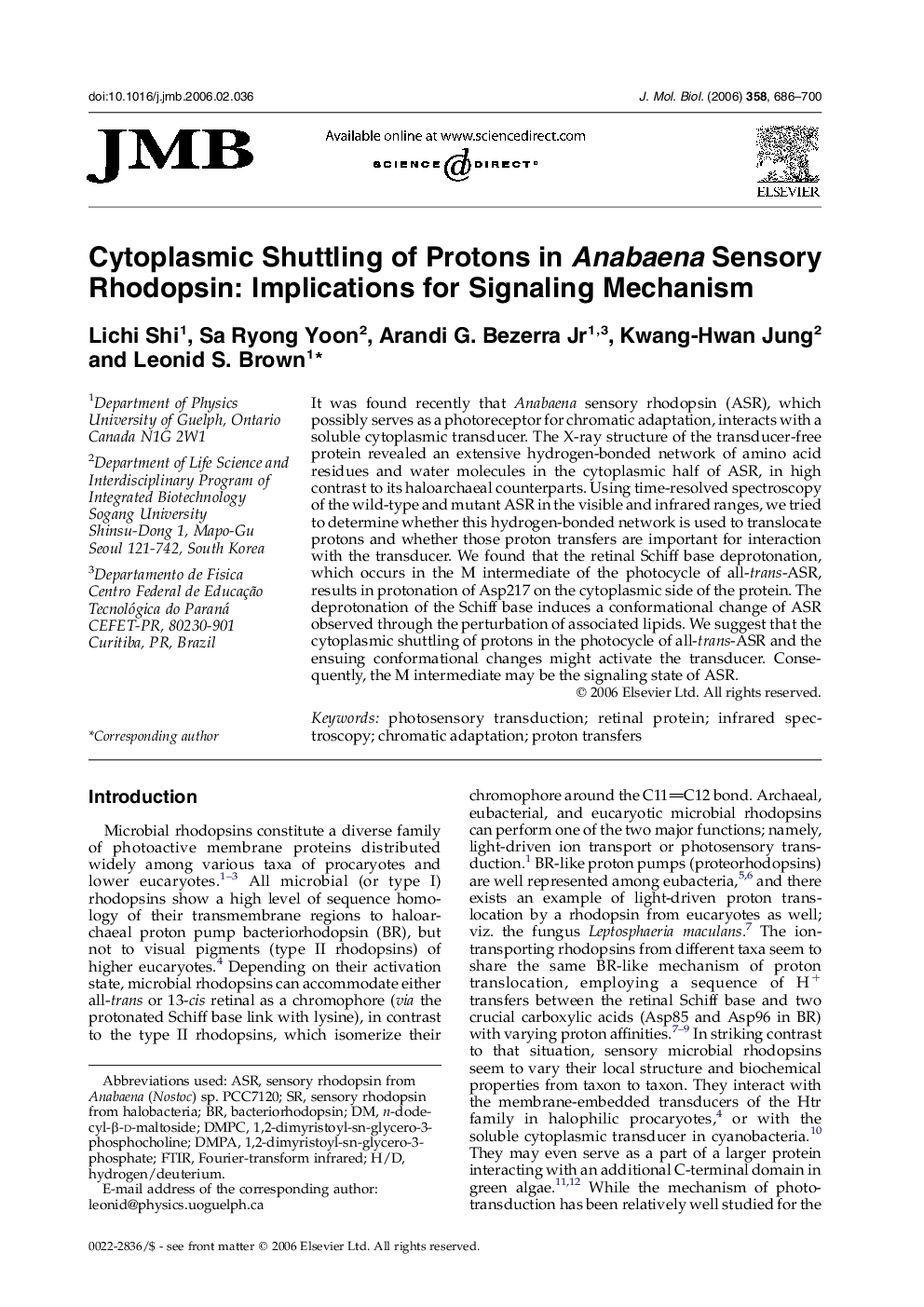| Article ID | Journal | Published Year | Pages | File Type |
|---|---|---|---|---|
| 2189975 | Journal of Molecular Biology | 2006 | 15 Pages |
It was found recently that Anabaena sensory rhodopsin (ASR), which possibly serves as a photoreceptor for chromatic adaptation, interacts with a soluble cytoplasmic transducer. The X-ray structure of the transducer-free protein revealed an extensive hydrogen-bonded network of amino acid residues and water molecules in the cytoplasmic half of ASR, in high contrast to its haloarchaeal counterparts. Using time-resolved spectroscopy of the wild-type and mutant ASR in the visible and infrared ranges, we tried to determine whether this hydrogen-bonded network is used to translocate protons and whether those proton transfers are important for interaction with the transducer. We found that the retinal Schiff base deprotonation, which occurs in the M intermediate of the photocycle of all-trans-ASR, results in protonation of Asp217 on the cytoplasmic side of the protein. The deprotonation of the Schiff base induces a conformational change of ASR observed through the perturbation of associated lipids. We suggest that the cytoplasmic shuttling of protons in the photocycle of all-trans-ASR and the ensuing conformational changes might activate the transducer. Consequently, the M intermediate may be the signaling state of ASR.
